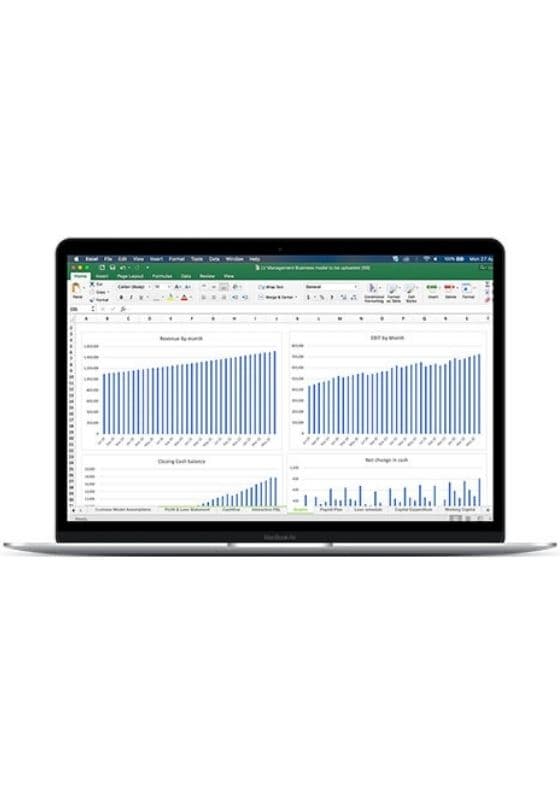Table of Contents
In the early stages of your new business, it is not always easy to evaluate how your business is tracking and growing. It can be difficult when you are “in the trenches” to take a step back and objectively size your business’ development up. Tracking some key metrics and milestones is one of the best ways to tackle this issue. While there are many metrics that you can use, a few are particularly useful to businesses in their early stages. This article will cover the following three key metrics and why they might matter to your business:
- net profit;
- the utilisation rate for your assets and employees; and
- market share.
Net Profit
Net profit is a key metric that most business owners and managers will be aware of and understand. It is your business’ revenue minus its expenses. In other words, it is the bottom line.
Do not get net profit confused with gross profit. The latter refers to the calculation of revenue minus the cost associated with that revenue (the cost of goods sold). Net profit covers all expenses, including the cost of goods your business sells and also wider expenses. It is one of the best ways to track your business’ overall performance and sustainability.
Becoming net profitable is a goal of most businesses. It signifies that the business is operating well and can continue to operate, or grow, into the future. However, if your business is not yet profitable, that is not necessarily a terrible sign for your business, particularly in the early stages. It is extremely common to operate at a loss – not be profitable – when starting a business. This will typically be the case as you make early investments with the expectation they will pay off later. There is usually a point where your business would target making a profit as an essential step. Until then, the risk is that your business ‘burns money’ as it makes less money than spending in total.

Improve your business’ profitability by understanding your gross margin. Use LegalVision’s free Gross Margin Calculator NZ to better manage your costs, product pricing and profit.
Utilisation Rate
The utilisation rate is the usage of your employees and significant assets, like machinery. The idea is to work out how well your team and productive assets are working and generating money for your business. There are different ways to calculate utilisation depending on the nature of the subject. For instance, one way of calculating a utilisation ratio for people is to take their billable hours across a week and compare it to the total hours worked. Additionally, you might calculate the utilisation of an asset like a plant or machinery by how much they are in use compared to how your business can actually use them.
Utilisation is particularly important for early-stage businesses to ensure that they get the most out of their scarce resources. It is essential that if your business invests in a new piece of machinery, it receives a return on that investment. One way of calculating that is to see how much your business utilises the asset. However, there are risks with this metric as well. In particular, it is a mistake to demand that your employees hit unrealistic ‘targets’ of utilisation – if they cannot bill as many hours as you expect, this may very well not be their fault. Consequently, it may cause resentment and dissatisfaction. Balancing metrics is a good skill for any business leader.
Continue reading this article below the formMarket Share
Simply put, the market share is the size of your business compared to the rest of the competition or market. There are a few different ways of calculating market share, and these will differ depending on how you gauge the competitive market your business is operating in. If you are operating a cafe on a busy street, you could calculate your market share based on your direct competitors or the wider cafe scene in the suburb.
In calculating market share, divide your business’ revenue by the total revenue made in the market (by your business and its competitors in sum). It is sometimes tricky to get these numbers, so market share can be hard to calculate precisely. However, as your business grows, this is often a vital metric to track. Developing a greater presence in the market and gaining on your competitors will often be a sign of success for early stage businesses.
Key Takeaways
Tracking key metrics is an important thing to do as an early stage business. It allows you to objectively see how your business is tracking and whether your business is tracking in a positive direction. The most basic way to determine this is net profit, to see whether your business is actually making money after paying all of its expenses. Other useful metrics include utilisation rates for your employees and productive assets, and market share, to see how your business is tracking against its local competition. Market share is a particularly important metric for gauging growth.
If you would like more information about key metrics to follow, contact LegalVision’s business lawyers on 0800 005 570 or complete the form on this page.
Frequently Asked Questions
Net profit is your business’ revenue minus its expenses. This figure includes all expenses, such as the cost of goods your business sells as well as every other cost your business incurs.
There are different ways of calculating utilisation depending on the subject. You can calculate the utilisation of an asset like a plant or machinery by how much they are in use compared to how your business can actually uses them.
There are also different ways of calculating market share. The simplest is to divide your business’ revenue by the total revenue made by your business and its competitors.
We appreciate your feedback – your submission has been successfully received.












